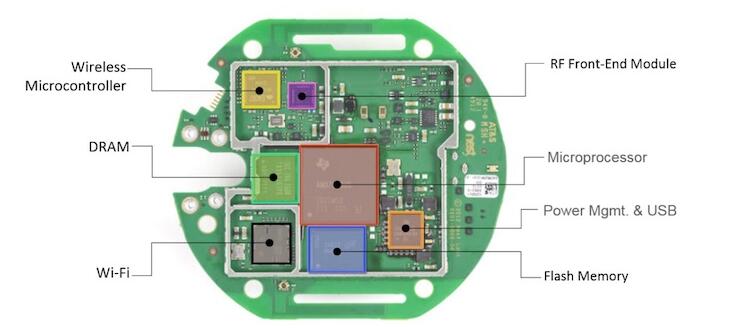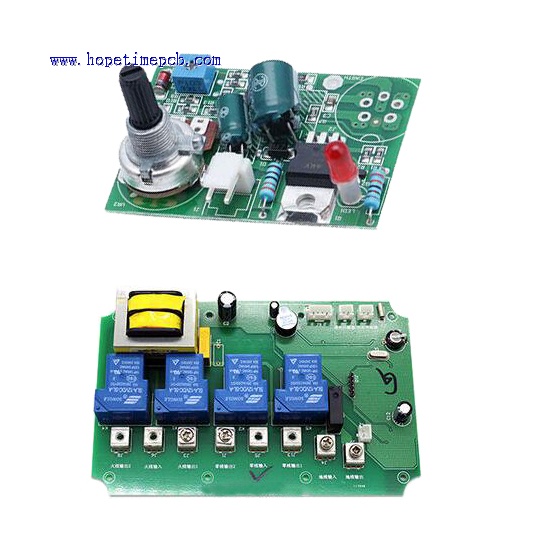Products >> SMT Assembly >> IOT device PCBA
China FR4 iot pcb and pcba for smart thermostat
- Product No.:2021816171133
- PCB board thickness:1.6MM
- Layer count:2L
- PCB material:FR4
- Copper thickness:1OZ
- Surface treatment:HASL LF
- Soldermask:Green
- silkscreen:White
- D.K:/
- D.F:/
- Min trace/gap:/
China FR4 iot pcb and pcba for smart thermostat

Figure 1: the PCB of a smart thermostat
We provide PCB/PCBA one stop solution for FR4 iot pcb and pcba for smart thermostat manufacturing.
The design of an IoT device requires proper evaluation and the right selection of three key factors: sensors, wireless connectivity and power management. The printed circuit board, which must be able to support the functionality offered by these components, requires a different design approach than the conventional one. The main aspects that affect the design of an IoT PCB are the following:
1.size:similar to what happens in smart wearable devices, IoT devices are very small in size and therefore require miniaturized components.
2.layout:the limited space available for the routing of the traces generally requires the choice of multilayer PCBs, with very stringent constraints regarding electromagnetic compatibility (EMC). In addition, the high density of components on the PCB requires an HDI (High Density Interconnect) design approach, resulting in a reduction in the size of the pads and an increase in the number of vias;
3.the integrity of the signal coming from the sensors must be guaranteed in all operating conditions, eliminating any possible coupling or interference with power lines and with the wireless interface signals;
4.Material
5.power management: this aspect is essential for extend the life of the batteries that power IoT devices.
6.security:a system that accesses a shared network is, by its nature, subject to possible attacks that can compromise its security.
7.Thermal management: IoT devices have small size, are battery powered and are usually enclosed in slot-free case, posing stringent requirements for thermal management.
Products Category
- PCB Design & Layout
- PCB manufacturing
- PCB Assembly
- BGA Assembly
- THT Assembly
- SMT Assembly
- Mixed PCB Assembly in Electronic PCBA
- Single sided PCB assembly
- Double sided PCB assembly
- Rigid-Flex Assembly
- COB Bonding Manufacturing
- Components sourcing for PCB Assembly
- SMT Stencils
- Box build assembly
- PCB engineer reverse
Contact Us
E-mail: [email protected]
E-mail: [email protected]
Skype: [email protected]
Whatsapp: +86 15012972502
Add: 2F, BUILDING H, WANDA INDUSTRIAL ZONE, ZHOUSHI ROAD, LANGXIN COMMUNITY,SHIYAN STREET, BAO 'AN DISTRICT, SHENZHEN, GUANGDONG, CHINA









 Skype Chat
Skype Chat WhatsApp
WhatsApp  Mail inquiry
Mail inquiry